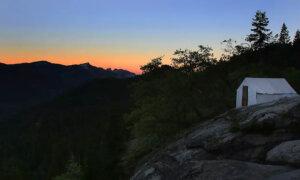The Lost Coast, a Northern California trail on many a hiker’s bucket list, is one of the only coastal backpacking opportunities in the contiguous United States. Starting in November, backpackers camping there will be required to pay $12 per trip.
The change is part of an effort to preserve this unique natural resource as tourism in the area has boomed. Money from the fee will go toward hiring more local park rangers, increasing public hours at the area’s visitor center, improving campgrounds and cleaning up trails after storms, officials said.
“Public lands are welcoming an increasing number of visitors,” Dereck Wilson, manager of the BLM Northern California District, said in a statement. “These fees will help maintain 85 miles of wilderness trail along the Lost Coast.”
Justin Crellin, executive director of nonprofit Friends of the Lost Coast, said the modest increase was “long overdue” and will lead to better management of the area.
The land’s best-known stretch runs through King Range National Conservation Area, where backpackers hike north to south on the Lost Coast National Recreation Trail along remote beaches home to elephant seals, sea otters and other marine life.
The most adventurous (or perhaps overachieving) backpackers can continue south, first 9 miles from Hidden Valley to Needle Rock in Sinkyone Wilderness State Park, and then—if your legs still feel OK—continue 19 more miles through the Sinkyone Wilderness State Park. This portion of the trail is known for being steep and at times overgrown.
What’s Changing?
Individuals and families who want to backpack the Lost Coast currently need a free-ish wilderness permit that’s issued online through recreation.gov. I say free-ish because, although there is technically no recreation fee for the permit itself, there is a non-refundable fee of $6 to reserve said permit.As the Lost Coast has become more popular over the years, officials have gradually added more clerical steps required to visit the trail. They first implemented a reservation system in 2017 to ensure the Lost Coast wouldn’t become overcrowded and lose its signature aura of solitude, said Jeff Fontana, a public affairs officer at the federal Bureau of Land Management (BLM), which manages the Lost Coast land.








